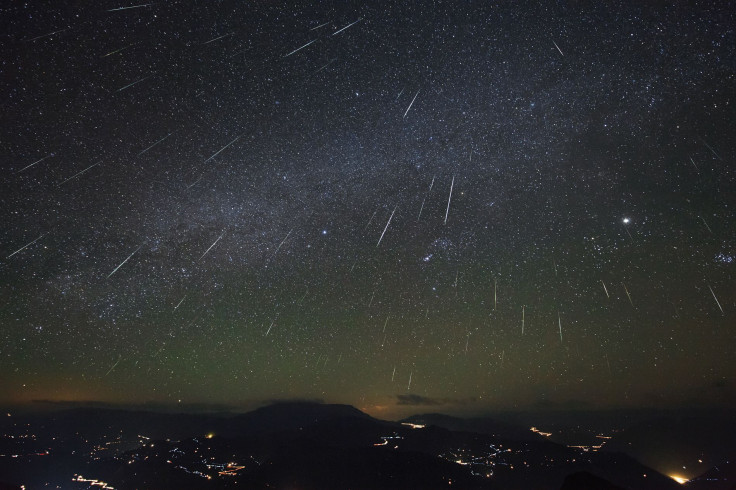Geminids 2017: When's The Best Time To See The Meteor Shower?

You probably haven’t noticed but a meteor shower had been going on since Dec. 4. The Geminids shower has been happening for days and will last until the 17 of the month, but the peak will occur early on the 14, according to NASA.
The meteor shower will be easiest to see from the Northern Hemisphere where up to 120 meteors per hour will be visible, those below the equator will still have a shot at seeing the shooting stars even though there will be fewer that are visible. When you look up in the early morning hours of the 14 and you can see Orion and Gemini then you should be able to see the Geminids.
On the 14, head outside after midnight when it’s fully dark out, and try to get away from any light pollution around you. Get comfortable and don’t forget to dress warm and bring blankets if you plan to stay outside for a while. Stare up at the sky either from a chair or from the ground and try to take in as much of the sky as possible.
The meteors will appear to come from the constellation Gemini, which is where the shower gets its name. The meteors don’t actually come from that constellation, it’s just the point in the sky from which they appear to stream down from, also called the radiant. But don’t solely focus on the radiant, the meteors will appear all over the sky so focusing on the one constellation will cause you to miss out on some of the shooting stars.
There will still be a bit of the moon on the sky on the 14 because the full moon won’t occur until the 18 of the month. Luckily though, the moon won’t rise until after 3 a.m. local time that day so you can spot quite a few meteors before the moon is even out. To block light from the moon you can use your hand or put on a hat tilted to the side to block the moon.
The meteors are actually the product of the asteroid 3200 Phaethon, it orbits the sun every 1.4 years and as it goes it leaves a path of rocks in its wake. When the Earth gets to the point in its orbit that passes through this trail, the little pieces stream through the Earth’s atmosphere. As they go, they usually burn up causing a stream of light that is referred to as a shooting star. The small particles are called meteoroids when they’re out in space, when they burn up in the atmosphere they’re called meteors, and if they make it all the way to the surface of the Earth they’re called meteorites.
© Copyright IBTimes 2024. All rights reserved.




















